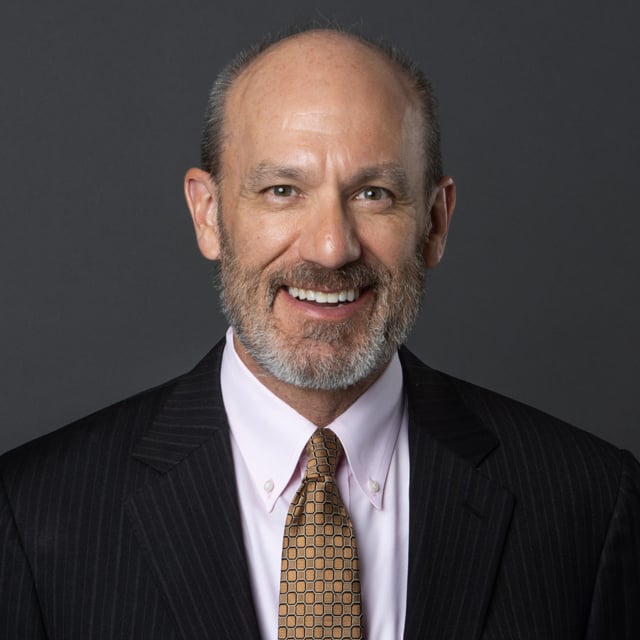Skip Schweiss: RIAs Can't Afford to Ignore These Big Trends

A fast-evolving set of risks and opportunities is challenging late-career workers, retirees and the financial advisors who serve them, and those who fail to respond to shifting conditions could see hard-earned nest eggs battered by unforgiving market forces.
At the same time, financial services firms that manufacture investment funds and outsourced portfolio models are facing their own evolving set of pressures and prospects, leading to a fast pace of product development across the spectrum of mutual funds, managed accounts, exchange-traded funds and other investment vehicles.
This was the case made in a recent interview by Skip Schweiss, the CEO of Sierra Investment Management and former president of TD Ameritrade Trust Co. Drawing on his extensive experience working in and around the advisory industry, Schweiss said this environment is also driving significant evolution in the work of registered investment advisors.
As Schweiss told ThinkAdvisor, today’s wealth management professional is expected by clients to be many things — a financial planner, a guidance counselor, a confidant and more. In a marked change from decades past, the investment management part of the client service equation is often placed behind these other roles, in no small part because today’s clients expect to get top-notch investment support from any professional they choose to work with.
These dynamics make it critical for wealth management teams to find ways to offload lower-value investment management tasks without adding manual labor or having to spend the time implementing and maintaining proprietary technology.
Concurrently, according to Schweiss, advisors’ clients are seeking investment approaches that better match their current phase in life, and for many RIAs’ core client segment, this means growing demand for investment options that can help them manage sequence of returns risk while also addressing their growing longevity.
It’s a fine balance, Schweiss says, but it is one that advisors and investment managers can work together to address in a way that benefits all parties involved.
THINKADVISOR: The last time you spoke with us was in January, when we talked about why 2023 would be an important time for the turnkey asset management program marketplace, as well as for outsourced portfolio models. I imagine you’ve had a busy but interesting year working on these topics?
Skip Schweiss: Without question. So, right now, we are continuing to build out our suite of risk-managed fund solutions in a way that reflects those trends. As you know, we’ve been around for 36 years now, and for most of that history we were really a fixed income manager.
In the past few years, advisors have been asking us to extend our risk management discipline into the equity space, and we’ve bene busy doing that. We are also getting into the balanced fund and full-on equity asset classes.
Next year, we’ll also be extending our risk-management discipline into the exchange-traded fund wrapper space, which is really exciting. And we are, of course, working on packaging up all of those things into usable models for advisors.
A lot of TAMPs are telling us: “Hey, we love having this or that model on our platform, but what advisors are really looking for is a full suite of options. Starting from a more conservative model, moving to a more conservative-moderate blended model, then on to a real moderate model. Then you might have a moderate-growth model, followed by a growth model and then an aggressive-growth model.
We’ve been busy responding to that granular demand, which is advisor-driven.
Do the advisors give you a good sense about why they are interested in this spectrum of options today? Is it because their clients are changing and facing different challenges? Maybe entering retirement and wanting a little bit more stability?
That’s part of it. Our core clientele is largely pre-retirees and retirees — people who have already earned their fortunes, so to speak, and now they don’t want to lose it. But they also know they can’t just sit in cash because of their longevity risk, though these days they are getting better returns on safer assets than we have seen in a long time. It’s more than a 5% return on safe assets.
This gives investors an interesting option, but they also know they need to take some risk. That’s why investors who work with us value our approach of taking a tactical, rules-based management approach. They can access the equity space without worrying too much about being torched while doing it if the markets turn on us.
We’re hearing this from advisors, who are hearing it from their clients.
Investors are saying, “I know I need to be exposed to some risk in order not to lose a ton of ground to inflation and in an attempt to grow and protect the nest egg as I draw income.” But they don’t want to wake up one day and see that sudden 20% or 40% drop.
It reflects the broader questions some advisors and clients are asking about really being careful around sequence risk. It can ruin your retirement.
Yes, so true. You can really, by no fault of your own, choose to retire at the wrong time and really suffer some bad luck. That immediate downdraft early in retirement can really derail an otherwise successful long-term plan.
Do you spend much time thinking about things like where interest rates may move or whether we are going to enter into a recession or not?






